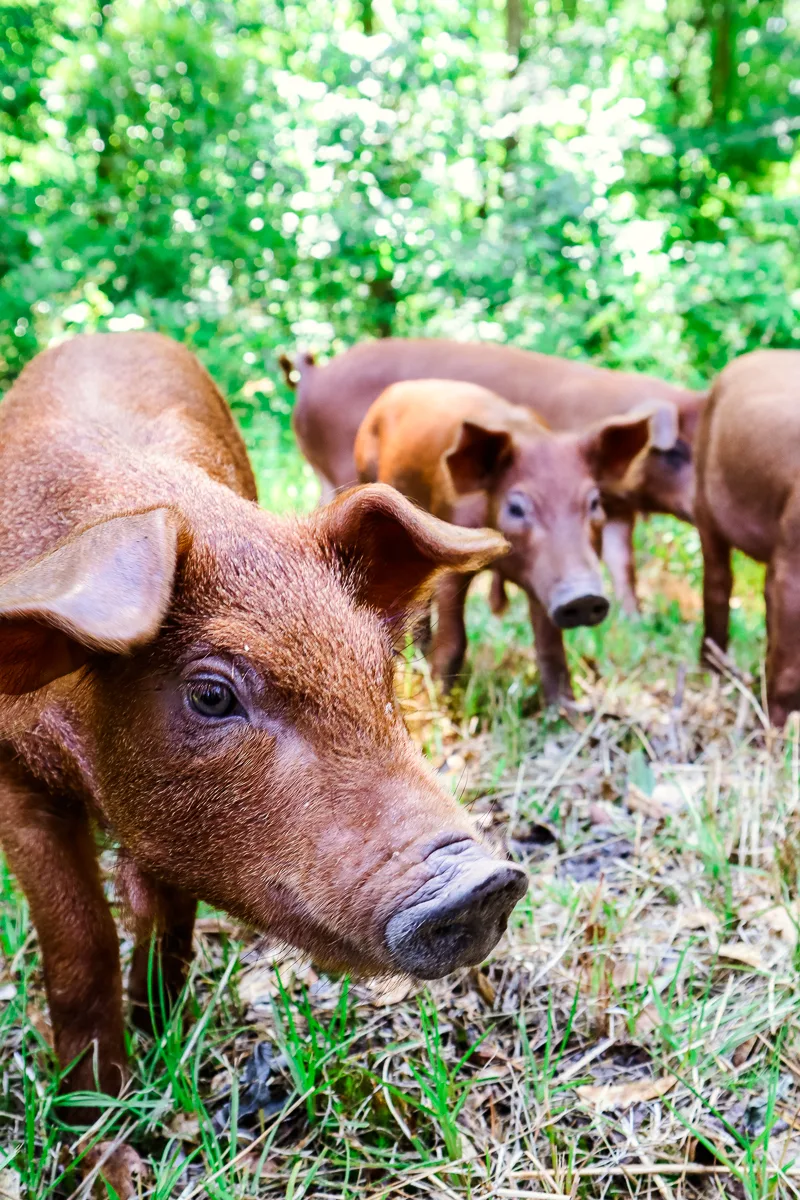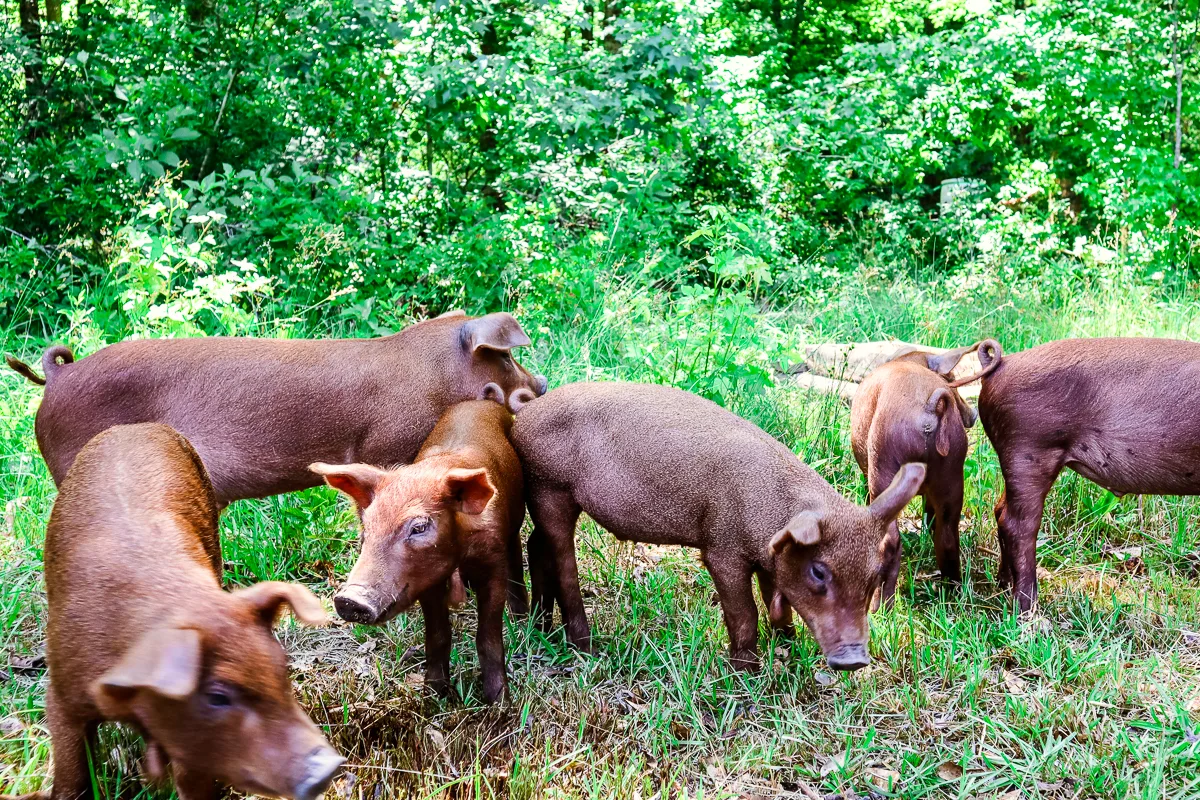NOTE: This is the second of the three-part series on roasting a whole pig with a custom-built La Caja China. The first part covered the design and assembly of a home-built roaster, and the last part will cover the day of roasting the whole pig. This part will cover sourcing your pig including how to have it prepared for the roast.

So, you either followed the directions in Part 1 to build your own La Caja China, or went ahead and bought your roaster. It doesn’t matter…you are set on roasting a whole pig to impress your family and friends!
Except, how does one find a whole pig to roast?
Our favorite option for sourcing a pig? Call your local farmer!
Living in the Deep South once again, I figured we would have a relatively easy time finding a pig farmer. While that is true, finding someone who can slaughter and process in a way fitting for a whole pig roast is another story.
A lot of pig farmers sell their animals to major processors for distribution to restaurants and grocery stores. What those places do not take usually gets used for producing other food products (hot dogs, sausages, etc.) or rendering to produce lard or soap (more on this later). Or if they do sell direct to consumer, they sell in prepackaged cuts, because that’s what is most easily consumed. Most of the time, you will need to work with the farmer and the processor to order your pig for roasting in la Caja China.
How we ordered our pig
We contacted a local farmer who not only provided us a quality pig, but also went the extra mile finding the right processor. Depending on where you live, you might be able to find a “one stop shop”. Growing up, my father and I would go to a processor that had pigs to sell, pick our pig, and it would be prepared for us to take home. This is common in Miami because many families will roast whole pigs for the holidays and special events. Google will be your friend here.
We believe in supporting local farms whenever possible, so we source our pig from Travis at Yarbrough Homestead in Montgomery, Alabama.

How do I need to order the pig prepared?
Because the pig needs to lay flat on its back for most of the roasting, the pig needed to be splayed.
Splaying means that in addition to cutting the pig from the neck to the bowels, the hips needed to be broken to ensure it could lay flat. The flatter the pig during roasting, the more even the cooking. Not every processor will do this, especially for one-off orders as it is a relatively costly processing activity, and it is not worth their while if they mostly sell to restaurants and grocery store chains.
Once processed, the processor will usually leave the kidneys intact as indication of freshness. Ours included the liver as well, which was used later on for making meals. The Godmother is a huge fan of liver and onions. Nothing went to waste on this animal…I will go into more detail on this in Part 3.
How big of a pig will I need?
It depends. A pig weighing just over 100 pounds at the farm will yield about 70 pounds on the roaster. Of those 70 pounds, you can anticipate about 50 pounds of meat ready for serving once you remove the bones and collect the drippings. In talking to the farmer about the home-built La Caja China design in Part 1, we arrived at the conclusion that a live pig weight of 110 pounds is the most it can handle to allow proper roasting. You will need to make other considerations as well…how many guests are you having over, what other food will be available, etc.
How far in advance should I order?
If you decide to go with a local farmer versus a major supplier of pigs for restaurants and grocery store chains, please consider the lead time necessary to make sure the pig you want is ready. Larger farms may able to work with you with a couple of weeks’ or even days’ notice due to the volume of pigs raised and slaughtered. Smaller farms may need up to eight weeks or more depending on the size pig you need.
Another reason why larger farms don’t need as much lead time is the pigs’ diet. Smaller farms tend to give their pigs more open spaces and their diet is more diverse. For example, our pig was able to roam a good bit on the farmer’s land to forage (as pigs do). The varied diet and exercise made a difference in the quality of the meat. This approach to raising pigs may not be possible with a larger farm that “mass produces” their hogs in quantities needed to meet market demands.
Our pig wound up weighing 70 pounds after processing.
How do you store the pig until roasting day?
Our pig was ready for us on a Wednesday, but roasting wasn’t happening until Saturday. Fortunately, we emptied our second refrigerator in time for the pig’s arrival. This refrigerator has french doors, which allowed the pig to fit with relatively little hunching over. We covered the pig with a couple painters’ tarps to prevent any liquids from spilling onto the refrigerator.
But not everyone has an extra refrigerator. So what else can you do?
Some people recommend placing the pig in a bath tub with ice. Replenish the ice as needed. That is a serious no-go with small children and a dog in our house. A third option is renting a large commercial sized cooler and placing the pig with the ice in there. You may store it up to 3 days this way. Just keep in mind that this partially freezes the pig, so you’ll have to allow a little time for it to thaw on preparation day.

I hoped this answered your questions for sourcing your pig. Look for all the details on pig preparation in Part 3!
